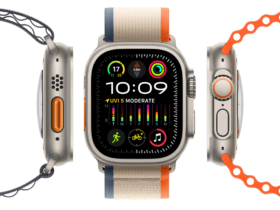Anxiety is a common experience, but when it becomes overwhelming, it can impact every aspect of your life, including your physical health. Learning how to manage and reduce anxiety is crucial for improving overall well-being. This blog will explore practical strategies to help you reduce anxiety and foster better health.
Understanding Anxiety
Anxiety is a natural response to stress and can be beneficial in small doses, helping you stay alert and focused. However, excessive or chronic anxiety can lead to a host of physical and mental health problems, including headaches, digestive issues, fatigue, and even cardiovascular problems.
1. Recognize and Acknowledge Your Anxiety
The first step in managing anxiety is to acknowledge it. Understanding what triggers your anxiety and recognizing the symptoms can help you address it more effectively. Common symptoms include racing thoughts, restlessness, muscle tension, and irritability.

2. Practice Mindfulness and Meditation
Mindfulness and meditation are powerful tools for managing anxiety. These practices help you stay grounded in the present moment, reducing the tendency to overthink or worry about future events. Regular mindfulness practice can help lower stress levels and improve emotional regulation.
Tips for Mindfulness and Meditation:
- Start Small: Begin with just 5-10 minutes a day. Gradually increase the duration as you become more comfortable.
- Focus on Breathing: Concentrate on your breath, inhaling deeply and exhaling slowly.
- Use Apps or Guided Meditations: There are many apps available that offer guided meditations and mindfulness exercises.
3. Exercise Regularly
Physical activity is a well-documented way to reduce anxiety. Exercise releases endorphins, which are natural mood lifters. It also helps to reduce levels of cortisol, the stress hormone.
Exercise Recommendations:
- Aim for Consistency: Try to get at least 30 minutes of moderate exercise most days of the week.
- Choose Activities You Enjoy: Whether it’s walking, running, cycling, or yoga, finding something you enjoy will make it easier to stick with it.
- Incorporate Relaxation Techniques: Activities like yoga or tai chi combine physical movement with breathing and relaxation techniques.
4. Maintain a Healthy Diet
What you eat can significantly affect your mental health. A balanced diet rich in fruits, vegetables, whole grains, and lean proteins can help stabilize your mood and energy levels. Certain foods and nutrients have been shown to have anxiety-reducing properties.
Diet Tips for Reducing Anxiety:
- Limit Caffeine and Sugar: Both can exacerbate anxiety symptoms. Opt for herbal teas and reduce sugary snacks.
- Include Omega-3 Fatty Acids: Foods like salmon, walnuts, and flaxseeds can support brain health and reduce anxiety.
- Stay Hydrated: Dehydration can impact your mood and cognitive function. Aim to drink plenty of water throughout the day.

5. Get Quality Sleep
Poor sleep can increase anxiety levels, creating a vicious cycle. Ensuring you get adequate, high-quality sleep is essential for managing anxiety.
Tips for Better Sleep:
- Create a Sleep Routine: Go to bed and wake up at the same time every day, even on weekends.
- Establish a Relaxing Bedtime Routine: Engage in calming activities before bed, such as reading or taking a warm bath.
- Limit Screen Time: Avoid screens for at least an hour before bed, as the blue light can interfere with your sleep cycle.
6. Develop Healthy Coping Mechanisms
Finding effective ways to cope with stress and anxiety is essential for long-term management. Healthy coping mechanisms can help you navigate difficult situations without becoming overwhelmed.
Coping Strategies:
- Journaling: Writing about your thoughts and feelings can help you process and release anxiety.
- Connect with Others: Talking to friends, family, or a therapist can provide support and perspective.
- Engage in Hobbies: Pursue activities that bring you joy and satisfaction.
7. Set Realistic Goals and Priorities
Setting unrealistic goals can contribute to anxiety. By setting achievable goals and prioritizing tasks, you can reduce the pressure you put on yourself.
Goal-Setting Tips:
- Break Down Tasks: Divide larger tasks into smaller, more manageable steps.
- Set Priorities: Focus on what’s most important and let go of less critical tasks.
- Celebrate Progress: Acknowledge and reward yourself for the progress you make.
8. Seek Professional Help
If anxiety is significantly impacting your daily life, it may be beneficial to seek professional help. Therapists and counselors can provide valuable tools and techniques for managing anxiety. Cognitive-behavioral therapy (CBT) is one evidence-based approach that can help change negative thought patterns and behaviors associated with anxiety.
When to Seek Help:
- Persistent Anxiety: If your anxiety persists despite your efforts to manage it.
- Impaired Daily Functioning: If anxiety is affecting your ability to work, maintain relationships, or perform daily tasks.
- Physical Symptoms: If you experience physical symptoms that interfere with your health.

9. Practice Self-Compassion
Being kind to yourself is crucial when dealing with anxiety. Self-criticism can increase anxiety and hinder your progress. Treat yourself with the same compassion and understanding that you would offer to a friend.
Ways to Practice Self-Compassion:
- Acknowledge Your Feelings: Accept that it’s okay to feel anxious and that you’re not alone in your experience.
- Avoid Negative Self-Talk: Replace self-criticism with positive affirmations and supportive statements.
- Give Yourself Breaks: Allow yourself time to rest and recharge.
Conclusion
Reducing anxiety and improving health is a multifaceted process that involves recognizing your anxiety, adopting healthy lifestyle practices, and seeking professional support if needed. By integrating these strategies into your daily life, you can manage anxiety more effectively and enhance your overall well-being. Remember, progress may take time, and it’s essential to be patient and persistent in your efforts to achieve a healthier, more balanced life.




















Leave a Reply